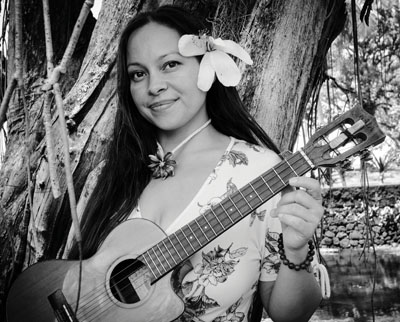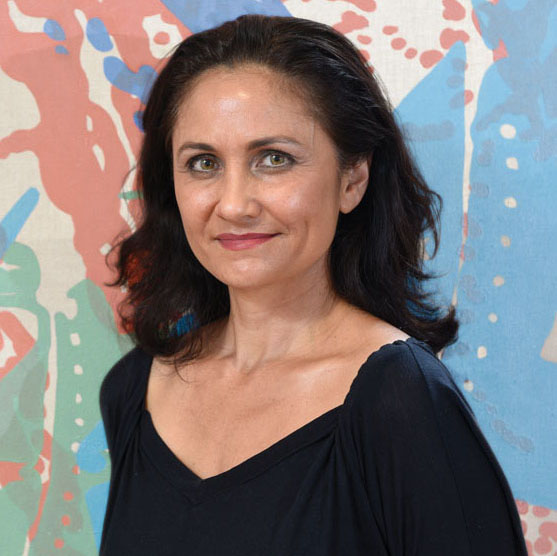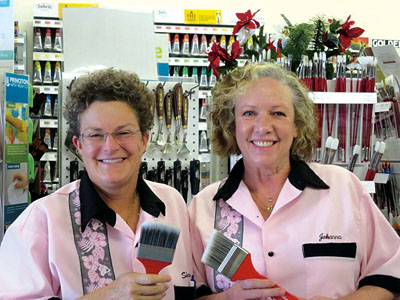
Keeping up With Kapa: Jani K. Puakea Fisher
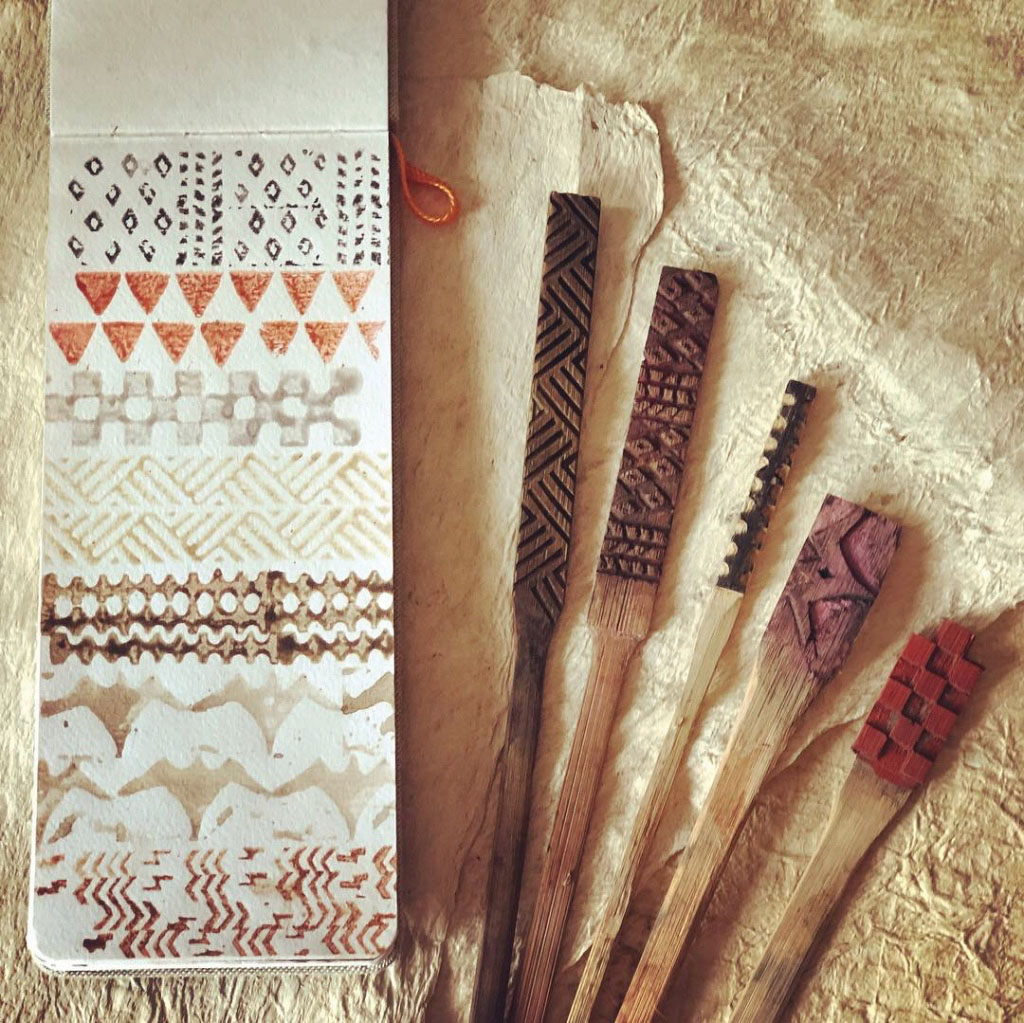
By Ma‘ata Tukuafu
Pre-contact Hawaiian kapa was some of the most exquisitely made barkcloth in the entire world. After contact, cotton muslin and other fabrics were introduced to the Hawaiian Islands by settlers, and the intricate art of kapa making was extinguished for more than 100 years. Although other island nations like Tonga, Samoa, and Fiji never stopped creating kapa (known to them respectively as tapa, siapo, and ngatu) their methods varied widely with their cultures, and the Hawaiian kapa making techniques were forgotten.

During the Hawaiian Renaissance of the 1960s, many of the lost arts were brought back by people who knew there could be deeper connections with the ‘āina and its culture again. In the realm of the kapa resurgence, young students at the time, like Puanani Van Dorpe, Malia Solomon, and Marie McDonald, were eager to learn what their ancestors had known.
In 1978, Jani K. Puakea Fisher was born in Kahuku, O‘ahu to Rebecca, a woodworker, and Jan Fisher, an art professor at Brigham Young University-Hawaii for more than 20 years. Her father was known for his great public monuments and Hawaiian artwork on almost every island. At eight years of age, Puakea was attending Ka‘a‘awa Elementary School—her kumu (teacher) was Aunty Kawai Aona-Ueoka. Aunty Kawai went to every class and announced that 1987 had been named Year of the Hawaiian, and anyone who wanted to, could participate in the closing hula, to be held in January 1988 at Aloha Stadium.
“I remember electricity coursing through my little body when I heard her invitation. Not only did I always adore dancing, but from a young age, I would hear my father speak of the Hawaiian gods and goddesses,” Puakea says. “I thought of Aunty Kawai as my hero queen with her Pele-like hair and beautiful singing. Basically I wanted to do anything she asked of me, and I thought hula was my life’s purpose, I was so ready.”
Puakea, who currently lives in Ninole, remembers the event as almost a dream. There are few references to the ’88 Ho‘olakahi hula event, although 60,000 people from every island attended or participated in it. An internet search produced a blurry video from which Puakea was able to retrieve a still that shows what she describes as her “little ‘ehu [red] head captured among the huge group of students dancing.” This memory has had a huge impact on her, as well as her Kumu Aunty Kawai, who nurtured her love of making kapa.
As haumana (students) of Aunty Kawai, Puakea says they would go to her home and learn to plant, harvest and process the wauke (paper mulberry) in her yard. The process had been forgotten, so cultural archaeologists like Aunty Kawai used what examples they had from their Polynesian cousins, in books, many pule (prayers), and a great deal of experimentation. Puakea remembers being excited as a keiki (child), gently cradling the wauke shoots, and her kumu teaching them “these are our brothers, and we are to mālama [care] for them.”

Puakea says every moment with Aunty Kawai was about “communion with the natural world around us—singing, praising, asking questions and listening…as if all were good kine friends, from growing ipu [gourds], venturing into the forest and gathering bamboo for pū‘ili [rattles], kukui root bark for dye, or fern for lei po‘o [head piece].” She recalls that Aunty Kawai had one kapa wooden beater that had a pattern of maka ‘upena pūpū (fishnets with dots), and she fell in love with it. Later, as an adult, Puakea found that this Kaua‘i design is particularly helpful when embossed into the fabric for wearable kapa like the kihei (wrap) and malo (loincloth) as it gives greater movement and flexibility. These were the seeds that nurtured her love of making kapa and the grounding that hula provided her.
Time passed, Puakea moved away from the islands in her adult years, and lived in the Pacific Northwest to be near her grandmother who was a known master gardener, quilter, and wool dyer. Her love of dance and textiles translated into folk and classical dances of the Middle East, dyeing silk veils, burial shrouds, and making costumes for her dancers.
“I danced because it was the purest form of expressing prayer and gratitude that I knew of. I taught dance for 11 years at a community college, and it was a feminine healing, but the dance wasn’t representing the land we were on,” says Puakea. “Over here, the dance is about the physical realm: flowers, water, fish, sun…whose hidden messages were to be interpreted by those aware of their energy and force. Many of the Middle Eastern dances are made for the stage—more surreal, and emotive. Unfortunately, I didn’t have that connection to the fabric from who-knows-where? Or the chemical dyes made with who-knows-what? Also, I knew second to oil, the clothing and textile industry is the largest polluter in the world. So when you don’t feel the connection in the deepest recesses of your na‘au [the gut], you try to manufacture it. Deep in my core I knew there was something not quite right about it.”
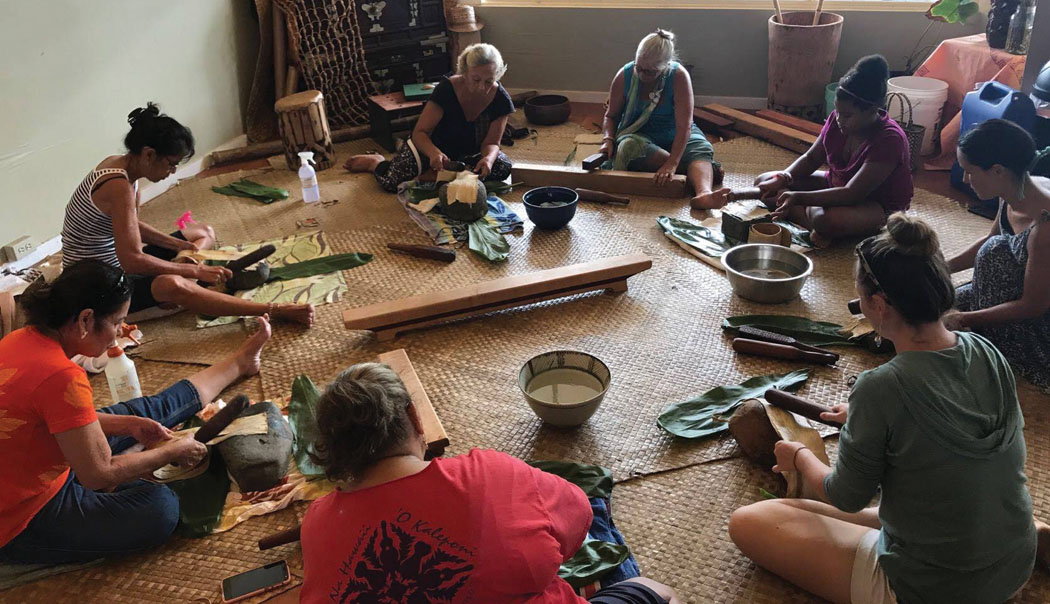
Her brother suggested she move to Hawai‘i Island. She arrived in early 2015. Obsessed with kapa even during the years she was away, Puakea immediately searched out Roen Hufford and found her at the Saturday farmers’ market in Waimea. Roen, along with her mother Marie McDonald and 29 other kapa makers, had outfitted an entire hālau with kapa for the 2011 Merrie Monarch. Roen invited Puakea to her home and led her to the wauke patch that was planted in 1978 by her mother.
For Puakea, this was full circle, bringing her back to the art she loved since she was a keiki. Roen agreed to teach her, and said the only way to make kapa is by first making your own kapa tools. This immediately led Puakea and her partner Nathan, an arborist, to begin learning how to fashion their own shell scrapers, kapa beaters, anvils, and the delicately carved bamboo stamps. Puakea says it was Roen who helped mold them into “those people” who make kapa tools. She reconnected with Aunty Kawai, and immersed herself in all things kapa in order to be as true to the art as she could.
Puakea feels tremendously blessed to learn from Kumu Roen: her unending wealth of plant knowledge, her playful exploration with kapa making methods and plant dyes, using various techniques like rubbing, steaming, and mixing with oils to create the native Hawaiian colors used on kapa. Kumu Roen allows her haumana the creative freedom to find out for themselves what works and what doesnʻt. Puakea still tends Roen’s wauke patch with her haumana and cultivates her own wauke patches on the Hāmākua Coast.
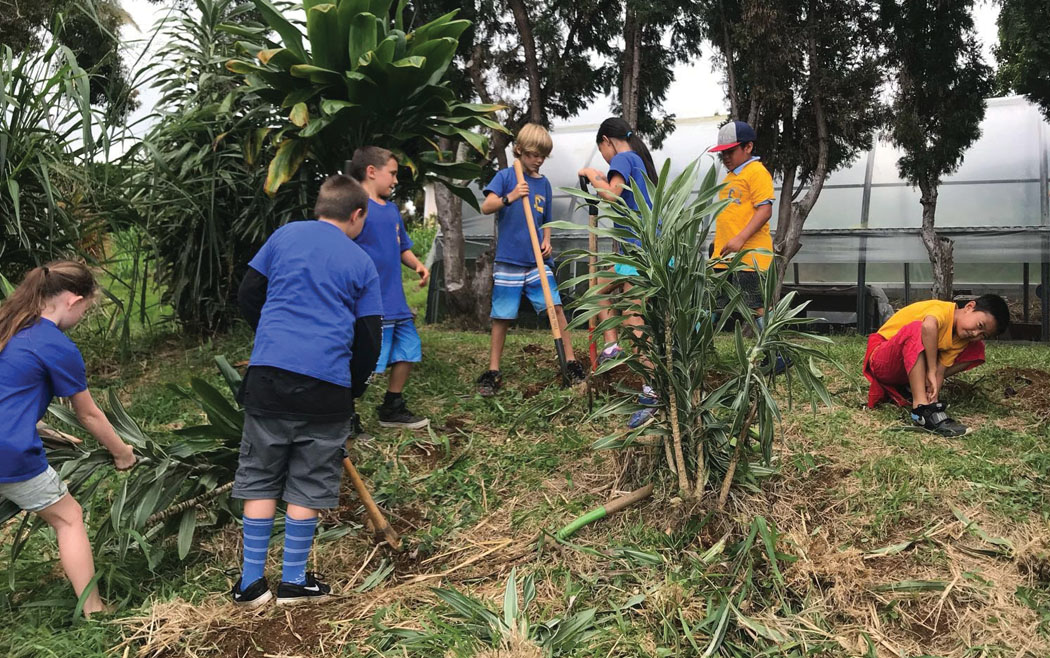
She is in her second year of Hawaiian language classes, as knowing the language helps with the kapa process. This has led her to co-author a kapa making children’s book in both Hawaiian and English. Puakea also contacted O‘ahu-based Dalani Tanahy, another passionate and renowned kumu kapa (whose first kumu kapa was Aunty Kawai, as well). Puakea and Dalani are currently collaborating on curriculum for higher education.
“In Dalani’s living room were several paintings that looked like my fathers work! Come to find out, they were her Grandma Enosʻs as she had taken art classes from my dad, Jan,” says Puakea.
She says Dalani has taught her how to create the softer type of kapa fabric. From a large collection of 800 kapa-making words in a master’s thesis by Benton Keali‘i, Puakea says this incredible resource is ordered alphabetically which makes it challenging for kapa makers to utilize; they are creating a working list categorizing names for types of kapa from design work on tools, as well as the nuances of what certain words may refer to.
Puakea believes sharing with people to make something that is 100 percent of the land. She says, “It reminds them that if I care for this land, I am from this land, then I must be beautiful, I must belong, therefore, like the plants, water and sky, I too am sacred. For our keiki and their kumu this is especially important to instill; deepening their pilina [sense of place] and showing them that not everything they use or create with, needs to be brought here on Matson containers or purchased from Amazon Prime.” This is why, Roen, Dalani, Puakea, and other kumu kapa make the time to teach this cultural practice, and how it instills the truest sense of pride.
The beautiful thing about living in today’s world is that both kāne and wāhine may shift from one component of kapa making to the other. Puakea is a teacher of kapa but insists that she is not a kumu—that she is here to share her kapa aloha and to walk side by side with the people she teaches. She has brought the ancient to the contemporary by creating beautiful high-end women’s leather handbags, dress shirts, mu‘u mu‘u, belts, and jewelry by attaching kapa as the primary ornamentation. She holds classes and workshops as well as retreats for anyone interested in learning to make implements, plant pigments and kapa. By bringing back this beautiful and functional art form, Puakea, the other kumu kapa, and the pioneers before them have succeeded in connecting themselves and everyone involved to the ‘āina, the ancestors and to themselves. ❖
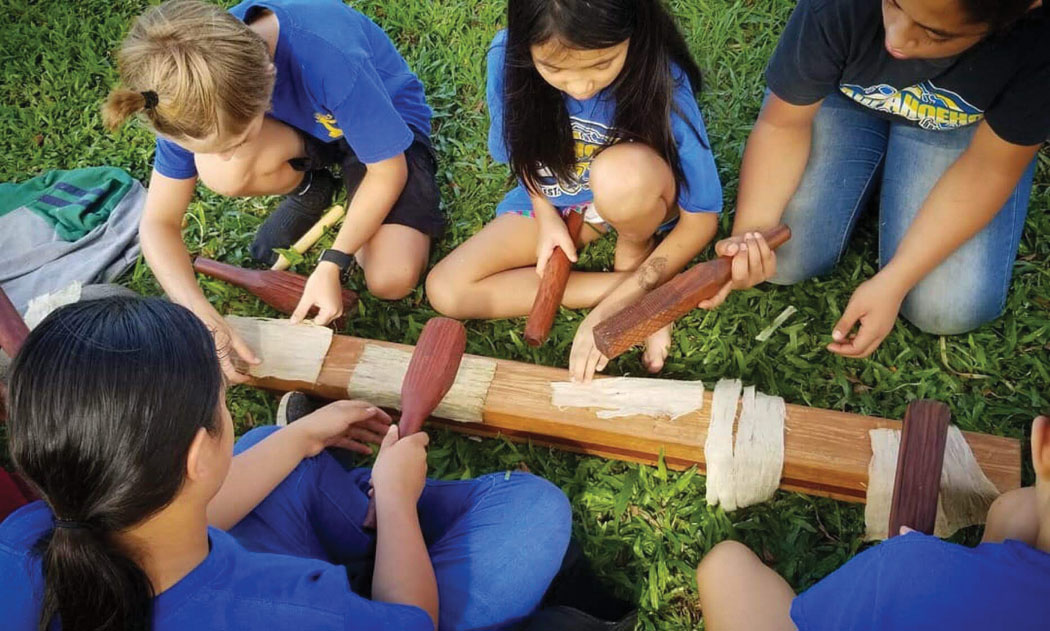
In ancient times, the entire village worked together to make kapa. The men cared for and harvested the wauke trees. They made the tools and implements used in the process, which included:
- Niho ‘oki (shark teeth knife) used to slice the bark of the wauke
- Wa‘u (shell scraper) used to scrape the outer bark
- Kua kuku (wood anvils) and kua pōhaku (stone anvils) used in the beating process
- I‘e kuku (preliminary wood beater)
- Kuku (second-stage beaters, squared in style)
- I‘e kuku ho‘ōki (beaters with carved surfaces on all four sides) forms watermarks on the kapa during final beating
The women created the kapa produced for (but not limited to):
- Clothing: pā‘ū (skirt for females) and malo (loincloth for males), and kīkepa (wrap)
- Bedding sheets called kapa moe; ivory or bone needles were used to sew the kapa sheets together
- Adornments
- Gifts presented at special occasions and chiefly events
- Religious and ceremonial use
- Sandals (some were made with partly beaten wauke)
- Burial sheets (usually a black color)
Other components in the dyeing and decorating process include:
- Plant dyes: ‘ākala (pink), kōlea (red), black, kukui (red-black), noni (yellow), ‘uki‘uki (plate blue), kou (red), roasted and ground kukui nuts (black–charcoal)
- Painting: using a hala brush from the lauhala tree
- Cord snapping: dipping a cord in dye and snapping it over white tapa
- Kāpala (printing): using ‘ohe kāpala (bamboo printers)—strips of bamboo whose inner soft bark is carved, either with straight lines (kapa liners) or other geometrical shapes (kapa stamps)
- Scented kapa: using plants between the sheets of kapa, a sweet scent from mokihana, maile, ‘iliahi (powdered sandalwood), ‘awapuhi, kamani, laua‘e
For more information: kapaalohaaina.com
Ka Hana Kapa, Merrie Monarch performance: https://vimeo.com/300473799
